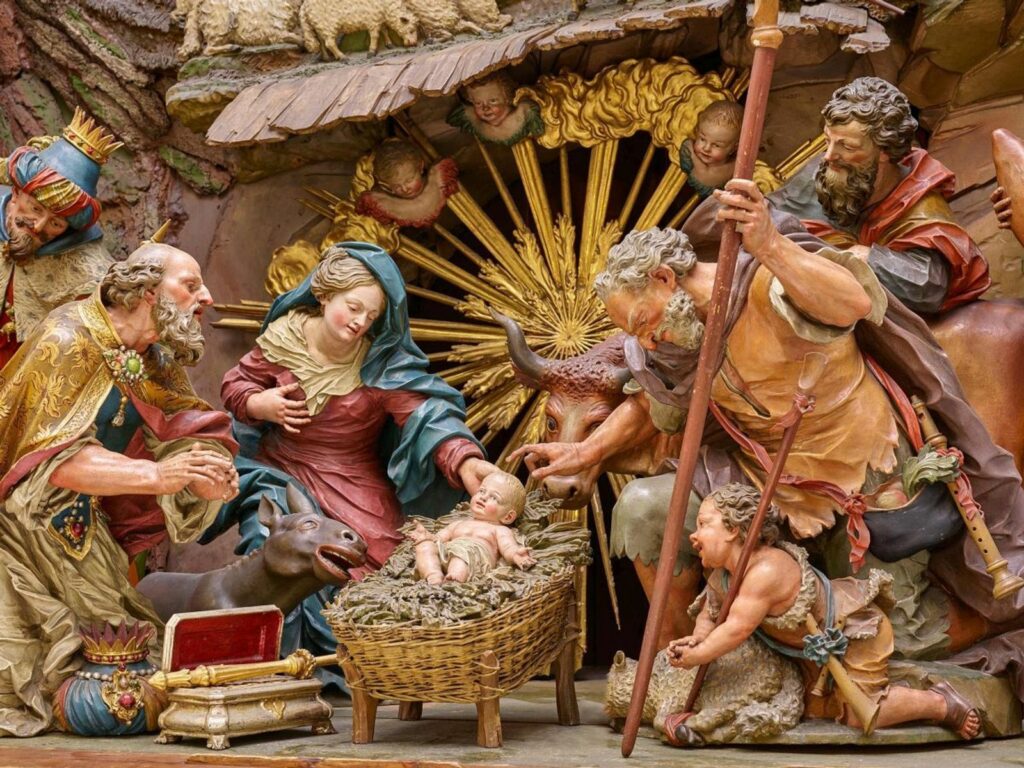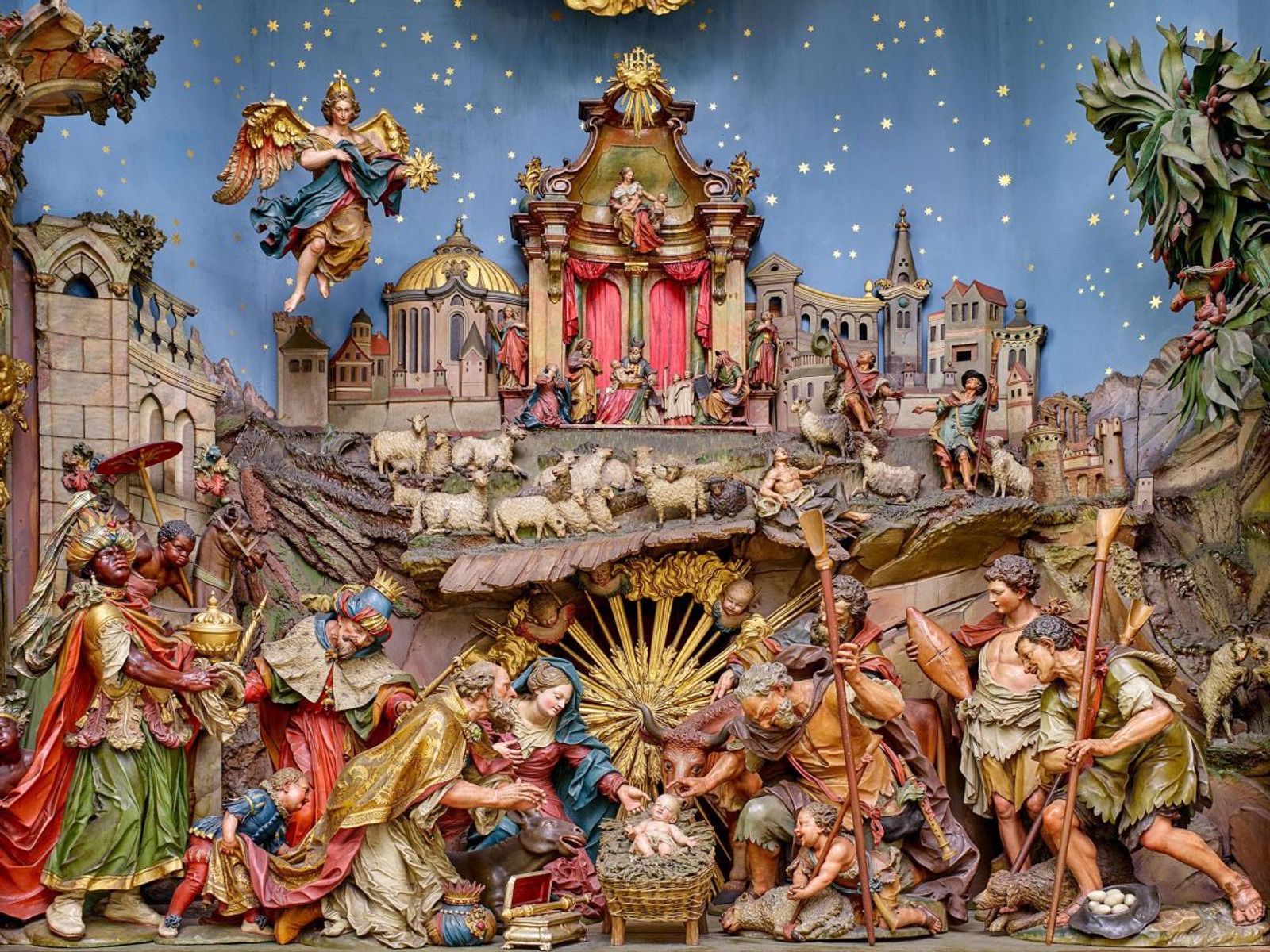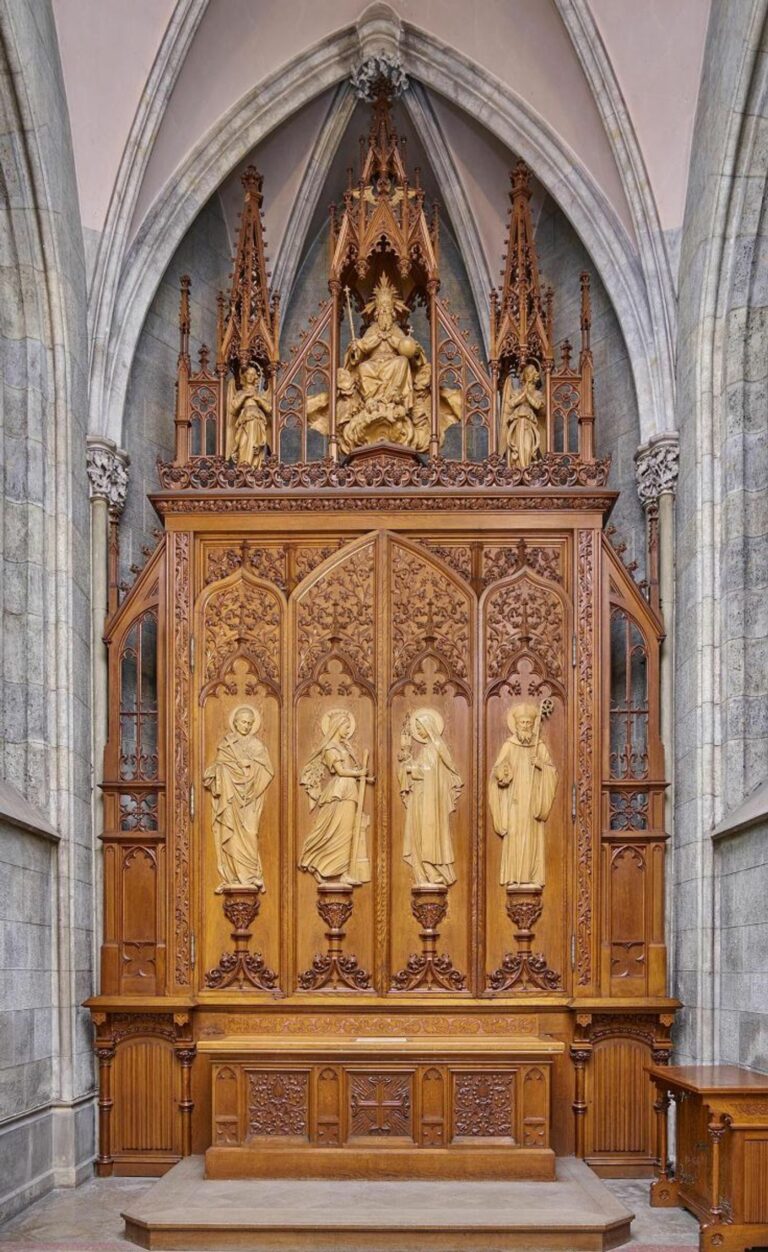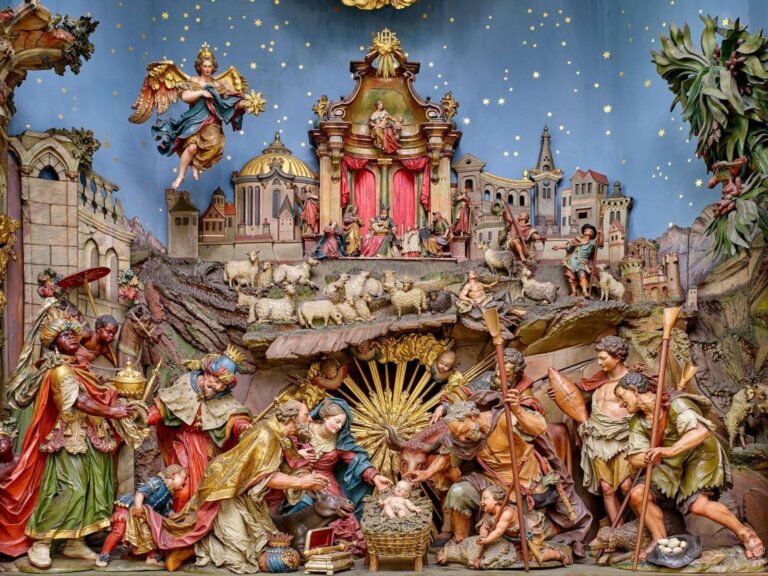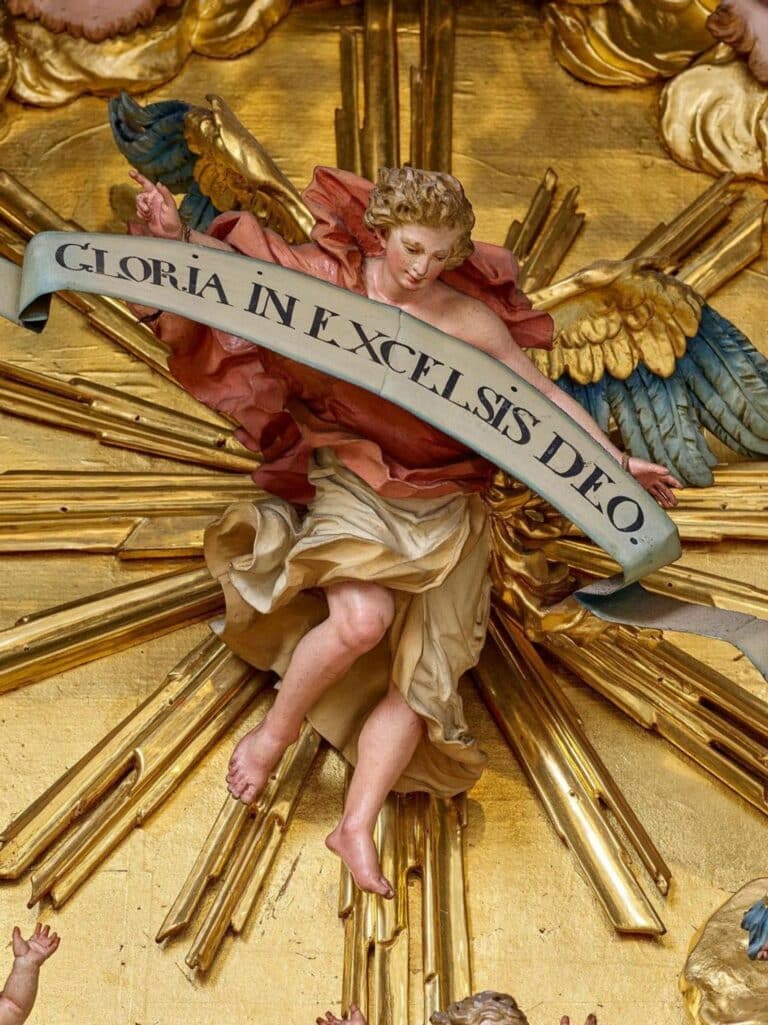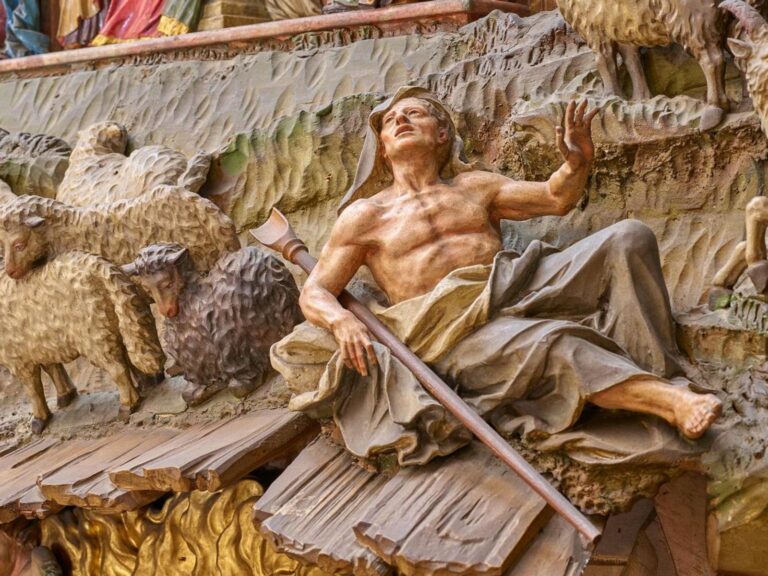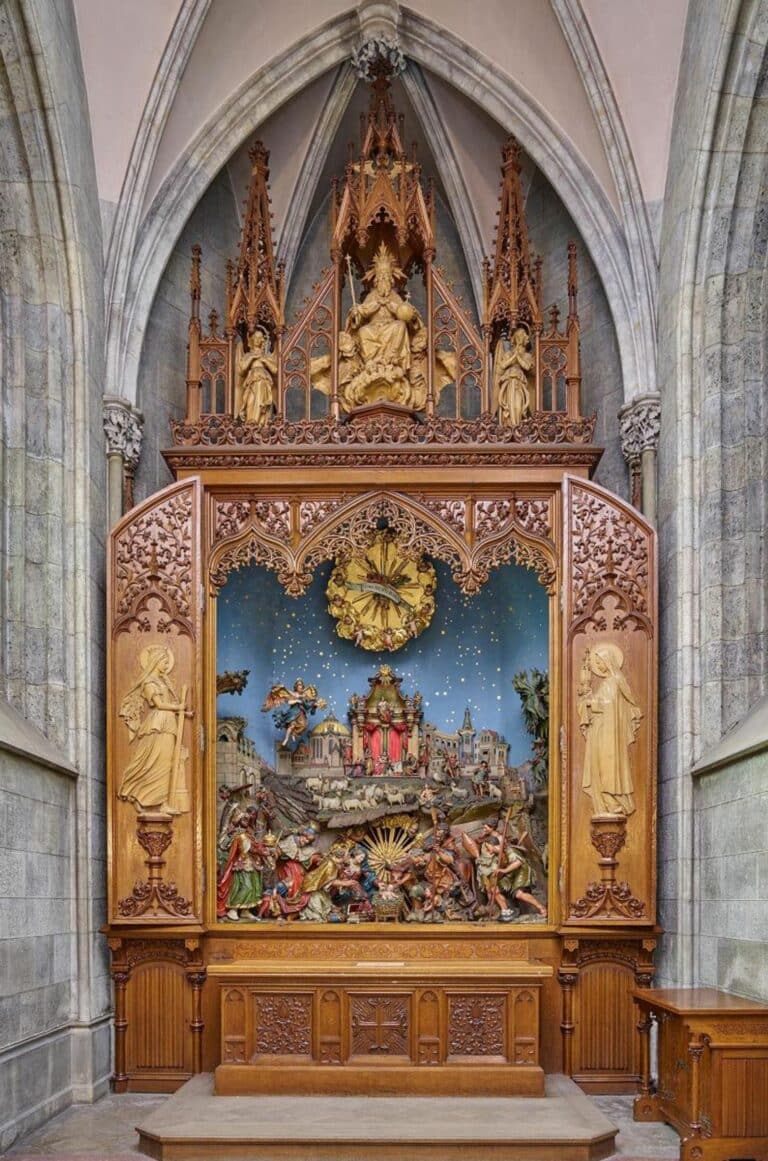The Admont nativity scene
An important example of baroque carving in Austria
An artistic Christmas miracle - the Admont nativity scene
Every year on 24 December, a very special work of art opens in Admont Abbey Church that has been touching visitors from near and far for centuries: the Admont Christmas cot - a masterpiece of Baroque piety and artistic expressiveness.
The impressive nativity scene was carved in 1755/56 by the famous sculptor Josef Stammel and skilfully painted by Anton Pötschnigg. It is housed in a neo-Gothic winged altar in St Barbara's Chapel. Its scenic structure encompasses the three central events of the Christmas festive cycle: the birth of Christ (25 December), the apparition of the Lord (6 January) and the Presentation in the Temple (2 February). Numerous allegorical details lend depth to the nativity scene: the owl as a symbol of paganism, illuminated by the light of Christ, a shepherd with diamond-shaped bread as an allusion to the Admont coat of arms or the depiction of the Christian virtues of faith, love and hope. Expressive faces, loving details and a jubilant group of angels make this work of art an emotional experience.
In accordance with Catholic tradition, the cot remains open until 2 February, the Feast of Candlemas - a festive finale in which the Christ Child once again takes centre stage and God's love for mankind becomes tangible.
Experience the Admont nativity scene - a unique testimony to Baroque art and deep Christmas joy.
